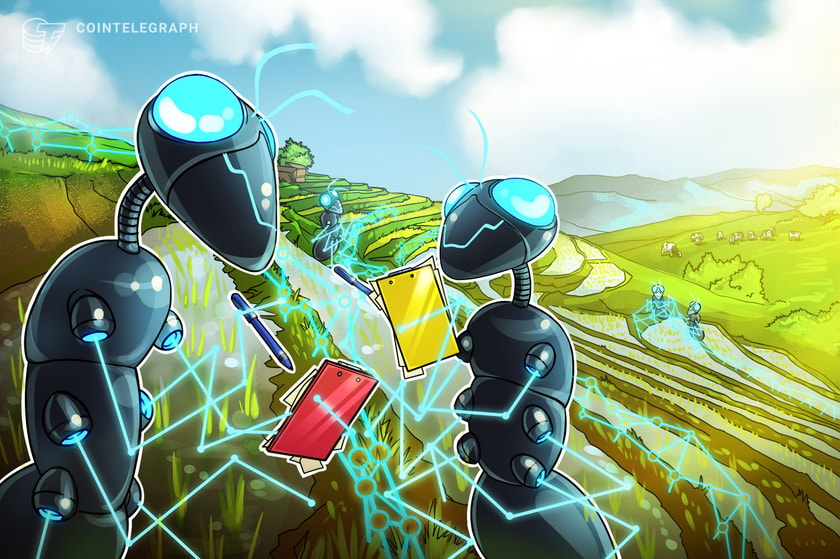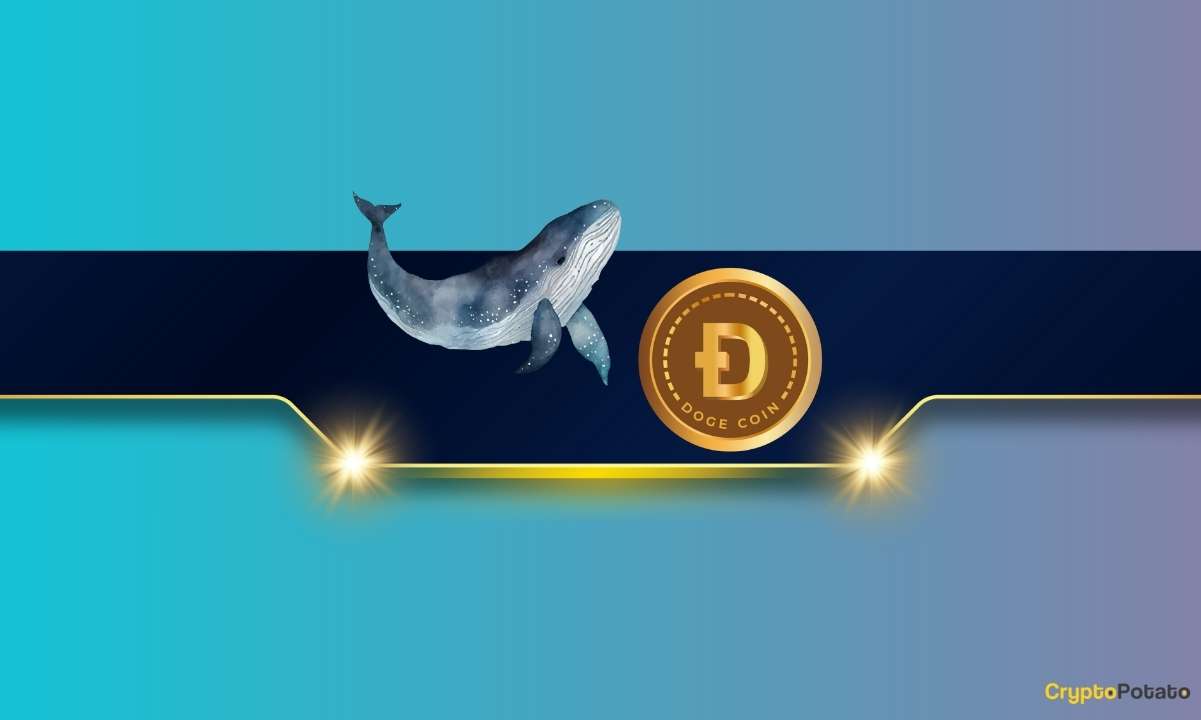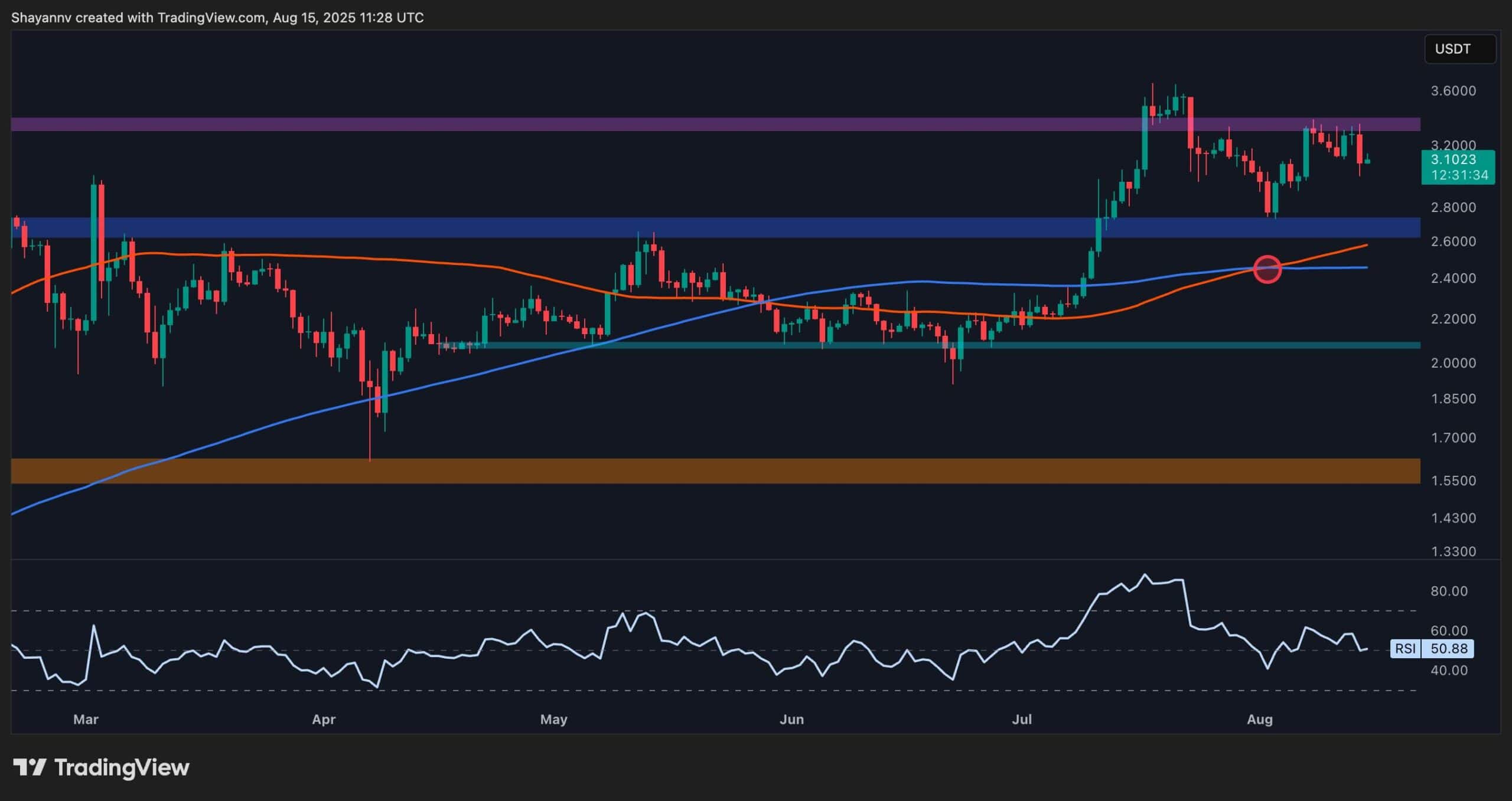Cryptocurrency
Blockchain technology lets East African farmers sell globally

Small farmers in the developing world may be on the cusp of an agricultural breakthrough. With emerging technologies like satellite imagery, drones and machine learning boosting productivity, it’s becoming more viable than ever to sell their produce in places like Western Europe.
There’s just one catch: avocado farmers in East Africa or coffee growers in Latin America have to be able to document that their crops have been grown in accordance with sustainable agricultural practices.
Their harvest bounty can’t come at the expense of denuded forests or through the assistance of child labor. And if their products are labeled “organic,” they will have to provide certification that no synthetic fertilizers and pesticides were used.
This is where blockchain technology could play a significant role.
Generating an immutable record
“Blockchain creates a great solution with an immutable record, particularly [when] combined with mobile” and other emerging technologies, Jon Trask, CEO of Dimitra — an AgTech firm active in 18 countries, which has worked with government agencies in Brazil, India, Uganda and Nepal — told Cointelegraph.
On July 20, Dimitra and One Million Avocados (OMA) — a sustainability-focused tech group — announced a partnership to help Kenyan avocado farmers boost production and quality through cutting-edge emerging technologies, including blockchain.

Dimitra’s multitech platform, which also includes mobile technology, artificial intelligence (AI), Internet of Things devices, satellite imaging and genomics, will give small farmers “greater access to solutions to further promote sustainable farming practices, primarily in pest and disease prevention and data reporting,” according to the press release.
Another key goal of the partnership is to help farmers in East Africa “overcome traceability issues to ensure maximum value of produce and to align with international regulatory frameworks.”
It’s not just in Kenya or the African continent where this movement of agricultural goods from the Global South to the Global North is picking up, either. “We have the same situation in Indonesia, Brazil and a few other Latin American countries,” Trask told Cointelegraph. “When they [farmers] are exporting their produce, they can get more dollars per kilo.”
Documentation will be critical for would-be exporters, especially with Europe’s new deforestation regulation, which went into force in June — though its main obligations won’t apply until yearend 2024. “You will have to prove that your firm has not been involved in deforestation,” explained Trask, adding:
“When an avocado farmer in Kenya goes to export their produce, they need to create certain documentation to show the origin of the produce. There is security associated with that document. It’s easy to create a fraudulent document.”
Enter blockchain, the traceability tool par excellence. “Blockchain-traced data is immutable and can serve as proof for farmers to get certifications or loans,” researcher SzuTung Chen, who recently completed a master’s thesis on coffee growing in Colombia, told Cointelegraph. “A blockchain company is working with carbon credit companies, for example, so that the farmers that are operating sustainable practices can have recorded data of their farming and get additional income.”
One of the biggest problems facing small farmers is information asymmetry, Chen explained. “Coffee brands and roasters capture the highest margin of the coffee price because they are closer to the end customers, and can leverage branding and marketing.”
Farmers, on the other hand, don’t know where their coffee goes after they sell it, the destination of their coffee or any coffee market trends — “which keeps them in a vulnerable situation in the supply chain,” she adds.
What blockchain can potentially do, she continued, is facilitate two-way transparency, so not only do stakeholders at the end of the supply chain know where the coffee comes from, but farmers also know what happens in the downstream supply chain.
More powerful than blockchain alone
Dimitra will use satellite imaging technology to help Kenyan farmers prove they aren’t ravaging woodlands to grow their avocados, but this technology can also be used to enhance productivity. By applying machine learning models to satellite imagery, Dimitra has developed algorithms that can pinpoint where more fertilizer is required or where irrigation needs to be stepped up, for example.
A multitech solution may generate synergies too. As Monica Singer, South African lead and senior strategy at ConsenSys, told Cointelegraph:
“When you are able to create an ecosystem using mobile and Internet of Things devices and AI, where relevant, it will be a more powerful solution than the blockchain ledger on its own.”
Is this cross-disciplinary approach the wave of the future? “I believe that blockchain can’t do it on its own,” Trask said. “We need to combine technologies in order to provide the services that the agricultural industry needs.”
It may be different in the financial sphere, conceded Trask, who has spent the past six years working on blockchain-related projects — his supply chain-related experience goes back even further. DeFi use cases can often stand on their own, but agriculture is different. “When we combine those technologies — machine learning and visual imaging and drones with blockchain — we can get more bang for the buck.”
The firm has “trained” machine learning models to recognize what a tree looks like using satellite images. A “tree” must have a certain canopy, height, etc. The firm can generate deforestation reports that illustrate within the boundaries of a farm where trees have been removed and where they have been added over a period of time.
Dimitra says Kenyan farmers can double their productivity by applying emerging technologies available today, but how much of that gain derives from digital ledger technology per se?
“It does require a combination of technologies,” answered Trask, but one shouldn’t overlook blockchain’s importance. “We originally did a project in East Africa around cattle,” he said, adding:
Farmers discovered that they could “get 50% to 100% more per pound of beef than they would if they didn’t have a traceability [blockchain] system.”
If African avocado farmers can meet the European Union’s documentation requirements, “they can get 30%, 50%, maybe even a couple hundred percent more on export.” Further gains from AI-driven enhancements in areas like irrigation and fertilization could result in a further doubling of productivity, he suggested.
Others agree that blockchain technology can become a factor in its own right with regard to the continent’s agricultural sector, particularly if its record-keeping capabilities are used for quality assurance, as Shadrack Kubyane, co-founder of South’s Africa’s Coronet Blockchain and eFama App, told Cointelegraph.
The importance of tamper-proof agricultural records was driven home to Kubyane by the world’s worst-ever listeriosis outbreak, which occurred in South Africa in January 2017 and had a death toll exceeding 200.
That case “continues to be contested in the courts to this day,” he said. The primary suspect remains a major food processing and distribution entity that, to this day, insists it was not the major source of the outbreak. “Had blockchain been in full force across that specific food chain, then the determinant factors and source of the outbreak would have been determined in two-and-a-half seconds or less, rather than waiting six-and-a-half years for a still-pending verdict.”
A “game changer”
ConsenSys’s Singer is bullish about blockchain’s future use on the continent. “Supply chain technology with track-and-trace functionality using blockchain technology will be a game changer in Africa,” she told Cointelegraph. “We have a high penetration of mobile phones in the continent. We also know that blockchain technology is most useful when there are many intermediaries and when we need to have an audit trail of transactions involving many parties in a transparent manner.”
In Africa, the farmer is often the last to benefit from the sale of produce, “in particular when there is dependency on many intermediaries.” Among other virtues, blockchain tech also helps with “right-sizing intermediaries,” Singer added. Moreover, “We currently have very few sophisticated technologies for track-and-trace.”
Some of blockchain’s key attributes resemble those of traditional African bartering systems, like the one used in the small village where Kubyane grew up.
During the harvest season, crops could be traded for livestock in various quantities as needed. This made for some blockchain-like benefits, including traceability, as “people knew exactly where their food came from”; transparency, since “goods could be exchanged without intermediaries adding unnecessary markups”; and supply chain control, as “many farming families had control over their entire supply chain — however small scale — from seed banks to direct sales to consumers.”
A barter system has many limitations, of course, including a lack of scalability, and Kubyane is against turning back the clock on Africa’s modern food supply chain. But blockchain technology can help with many contemporary challenges, including “food traceability, post-harvest losses, lack of supply chain transparency, unfair trade practices, and monopolies that marginalize small and semi-commercial farmers,” he told Cointelegraph.
Patience is required
Overall, it may take some time to move the African farming needle. “Certainly, it will take years,” said Trask. For instance, a farm cooperative may come in and sign a contract with Dimitra and say that “they’re going to onboard 30,000 farmers. We probably never get 100% adoption; we may only get 80%.”
Moreover, only 10% of system users may be “power users,” he continued. Some may be participating because food giants like Nestle and others have told them “they had to have traceability,” Trask noted. Other farmers simply don’t want to convert to new technologies.
Another challenge is, implementing these solutions sometimes “requires too many parties to be involved or to learn about the technology,” according to ConsenSys’s Singer.
Solutions must also be accessible, affordable and scalable, added Kubyane. “It is of utmost importance to have patient capital at a significant scale.”
In sum, synergies from melding blockchains with other emerging technologies like satellite imagery, AI, mobile tech and others may one day revolutionize agriculture in the developing world. But until that day arrives, farmers in East Africa and other regions can potentially fetch higher prices for their products by tapping export markets like the EU and North America.
But to secure a permanent place at dining tables in these Western economies, they will have to convince regulators and sustainability-minded publics that their crops weren’t grown by razing woodlands or employing child labor. To accomplish that, private and public blockchains, with their enhanced tracking, tracing and certification capabilities, may prove invaluable.
Cryptocurrency
Ethereum Foundation, Whales, and Hackers: What’s Driving the ETH Sell-Off?

TL;DR
- Whales, hackers, and the Ethereum Foundation wallets moved over $500M in ETH through large sales and withdrawals.
- Ethereum transfers rose to 4.6M ETH, nearing the monthly high of 5.2M recorded in July.
- Staking inflows hit 247,900 ETH, the highest in a month, locking more supply from trading.
Large Withdrawals and Whale Activity
Ethereum (ETH) has seen heavy movement from major wallets over the past few days. On-chain data from Lookonchain shows a newly created wallet pulled 17,591 ETH, worth $81.62 million, from Kraken in just two hours.
Over three days, two new wallets withdrew a combined 71,025 ETH, valued at $330 million, from the exchange.
One of these wallets, address 0x2A92, has withdrawn 53,434 ETH, worth $242.34 million, in two days. This includes a recent purchase of 30,069 ETH, valued at $138.46 million, during a market drop.
Major ETH Holders Offload Millions Amid Price Rally
In contrast, several separate entities have been disposing of some ETH holdings. A wallet tied to a hacker address 0x17E0 sold 4,958 ETH for $22.13 million at $4,463, securing a profit of $9.75 million. Earlier this year, the same address sold 12,282 ETH at $1,932 and later bought back part of the amount at higher prices.
A different whale sold 20,600 ETH for $96.55 million over the past two days, generating a profit of more than $26 million after holding the position for nine months.
Meanwhile, an Ethereum Foundation-linked wallet, 0xF39d, sold 6,194 ETH worth $28.36 million in the last three days at an average price of $4,578.
Recent sales from the same wallet included an additional 1,100 ETH and 1,695 ETH for over $12.7 million combined.
The #EthereumFoundation-linked wallet(0xF39d) sold another 1,300 $ETH($5.87M) at $4,518 ~11 hours ago.
Over the past 3 days, this wallet has sold a total of 6,194 $ETH($28.36M) at an average price of $4,578.https://t.co/4hfCWymHVG pic.twitter.com/ErUyEY8SJy
— Lookonchain (@lookonchain) August 15, 2025
Network Activity on the Rise
CryptoQuant data shows Ethereum’s total tokens transferred have been climbing since August 9. After ranging between 1 million and 3 million ETH through late July and early August, transfers have risen to 4.6 million ETH, approaching the monthly high of 5.2 million recorded in mid-July. This increase has occurred alongside a price rally from about $3,400 to $4,600.
Interestingly, staking inflows generally stayed between 20,000 and 80,000 ETH per day over the past month. On August 14, inflows jumped to 247,900 ETH, the highest in the period.
At the time, ETH was trading near $4,600. Large staking deposits reduce the amount of ETH available for immediate trading, as staked coins are locked for a set period.
In the meantime, ETH trades at $4,647 with a 24-hour volume of $68.25 billion, down 2% on the day but up 19% over the week.
Binance Free $600 (CryptoPotato Exclusive): Use this link to register a new account and receive $600 exclusive welcome offer on Binance (full details).
LIMITED OFFER for CryptoPotato readers at Bybit: Use this link to register and open a $500 FREE position on any coin!
Cryptocurrency
Massive DOGE Whale Activity Hints at $1 Breakout

TL;DR
- Whales bought two billion DOGE this week, lifting their combined holdings to 27.6 billion coins.
- A single 900M DOGE transfer worth $208M to Binance drew attention to large exchange movements.
- DOGE broke key resistance, with momentum building for a possible push toward the $1 price mark.
Price and Market Moves
Dogecoin (DOGE) traded at $0.23 at press time, slipping 4% over the past day but still showing a 2% gain for the week. Daily turnover came in at about $6.18 billion.
Meanwhile, the broader crypto market saw over $1 billion in liquidations. Hotter-than-expected US Producer Price Index data pushed traders to scale back expectations of a near-term Federal Reserve rate cut. DOGE had roughly 290,500 coins liquidated during the sell-off.
On the two-week chart, analyst Trader Tardigrade notes that DOGE has cleared a downward-sloping resistance line after completing what appears to be a “wave V” in an Elliott Wave sequence. Similar setups in the past, where prolonged declines stayed within falling channels before breaking higher, have been followed by sharp rallies.
$Doge/2-week#Dogecoin is gaining strong momentum to surge above $1 pic.twitter.com/TuSEKr19nv
— Trader Tardigrade (@TATrader_Alan) August 15, 2025
Momentum gauges are also turning up. The Stochastic RSI, which had dropped into oversold territory, is now heading higher. Previous reversals from this zone have coincided with sustained upward moves. The current formation points to a possible run that could carry DOGE past the $1 mark.
Heavy Whale Buying and Large Transfers
As reported by CryptoPotato, blockchain data shows large investors have added two billion DOGE in the past week, spending just under $500 million. That brings their holdings to about 27.6 billion coins, or 18% of the supply. The buying streak has prompted speculation within the community.
Recently, Whale Alert flagged a 900 million DOGE transfer worth about $208 million into Binance. The tracking indicates that it originated from a wallet connected to the exchange, likely as an internal activity. The address involved holds 2.88 billion DOGE, one of the largest balances on the network.
Ali Martinez also reports that transactions above $1 million reached a one-month high, with activity building since early August and peaking as DOGE traded at $0.25.
Whales are back! Dogecoin $DOGE activity at a 1-month high. pic.twitter.com/C83Pv68mCt
— Ali (@ali_charts) August 14, 2025
Sentiment Building
Analyst Gordon described the current setup as “a nice bit of consolidation” before a potential breakout, adding,
“This will be one of the first coins normies FLOCK to & the pump will be MASSIVE.”
With whale accumulation rising, high-value transfers increasing, and a bullish technical pattern in play, DOGE is positioned for a potential push toward $1 if momentum holds.
Binance Free $600 (CryptoPotato Exclusive): Use this link to register a new account and receive $600 exclusive welcome offer on Binance (full details).
LIMITED OFFER for CryptoPotato readers at Bybit: Use this link to register and open a $500 FREE position on any coin!
Cryptocurrency
Ripple Price Analysis: XRP at Risk as Key Support Levels Could Trigger Sharp Drop

XRP has recently entered a consolidation phase after a strong rally earlier this summer, with the price action now hovering around key resistance levels on both its USDT and BTC pairs. Yet, while momentum has slowed, the charts still indicate a generally bullish structure, with multiple key support levels remaining firmly in place.
Technical Analysis
By ShayanMarkets
The USDT Pair
On the XRP/USDT daily chart, the price is currently trading near the $3.10 mark, facing a strong resistance zone around $3.40. This follows a breakout above the $2.70 range in July, which has now flipped into a support area.
Both the 100-day and 200-day moving averages are also trending upward and recently formed a bullish crossover around $2.45, reinforcing the medium-term bullish sentiment. If the $3.40 resistance breaks, a push toward the critical $4.00 range becomes likely.
However, the RSI hovering near the neutral 50 level suggests a lack of strong momentum for now, meaning a short-term pullback into the $2.80 support zone is still possible.
This zone will be key for maintaining the bullish structure. Losing it could open the door for a deeper correction toward the 200-day moving average located around the $2.40 mark. Yet, as long as the price stays above the moving averages, the broader trend remains bullish.
The BTC Pair
Looking at the XRP/BTC chart, the pair has recently pulled back after hitting the 3,000 SAT resistance, with the price currently around 2,600 SAT.
This follows a clean breakout above the long-term descending channel and a successful retest of its upper boundary, which coincided with the 200-day moving average and the 2,400 SAT support zone. This confluence remains a key bullish technical factor, as holding above it could attract renewed buying pressure.
That said, RSI levels around 48 show that momentum has cooled after the sharp July rally, meaning XRP may continue ranging between 2,400 SAT and 3,000 SAT in the near term. A decisive close above 3,000 SAT would likely open the path to the 3,400 SAT zone, while losing 2,400 SAT could shift the bias back toward 2,000 SAT support. For now, the structure still favors the bulls as long as higher lows remain intact.
Binance Free $600 (CryptoPotato Exclusive): Use this link to register a new account and receive $600 exclusive welcome offer on Binance (full details).
LIMITED OFFER for CryptoPotato readers at Bybit: Use this link to register and open a $500 FREE position on any coin!
Disclaimer: Information found on CryptoPotato is those of writers quoted. It does not represent the opinions of CryptoPotato on whether to buy, sell, or hold any investments. You are advised to conduct your own research before making any investment decisions. Use provided information at your own risk. See Disclaimer for more information.
Cryptocurrency charts by TradingView.

 Forex3 years ago
Forex3 years agoForex Today: the dollar is gaining strength amid gloomy sentiment at the start of the Fed’s week

 Forex3 years ago
Forex3 years agoUnbiased review of Pocket Option broker

 Forex3 years ago
Forex3 years agoDollar to pound sterling exchange rate today: Pound plummeted to its lowest since 1985

 Forex3 years ago
Forex3 years agoHow is the Australian dollar doing today?

 Cryptocurrency3 years ago
Cryptocurrency3 years agoWhat happened in the crypto market – current events today

 World3 years ago
World3 years agoWhy are modern video games an art form?

 Commodities3 years ago
Commodities3 years agoCopper continues to fall in price on expectations of lower demand in China

 Economy3 years ago
Economy3 years agoCrude oil tankers double in price due to EU anti-Russian sanctions























